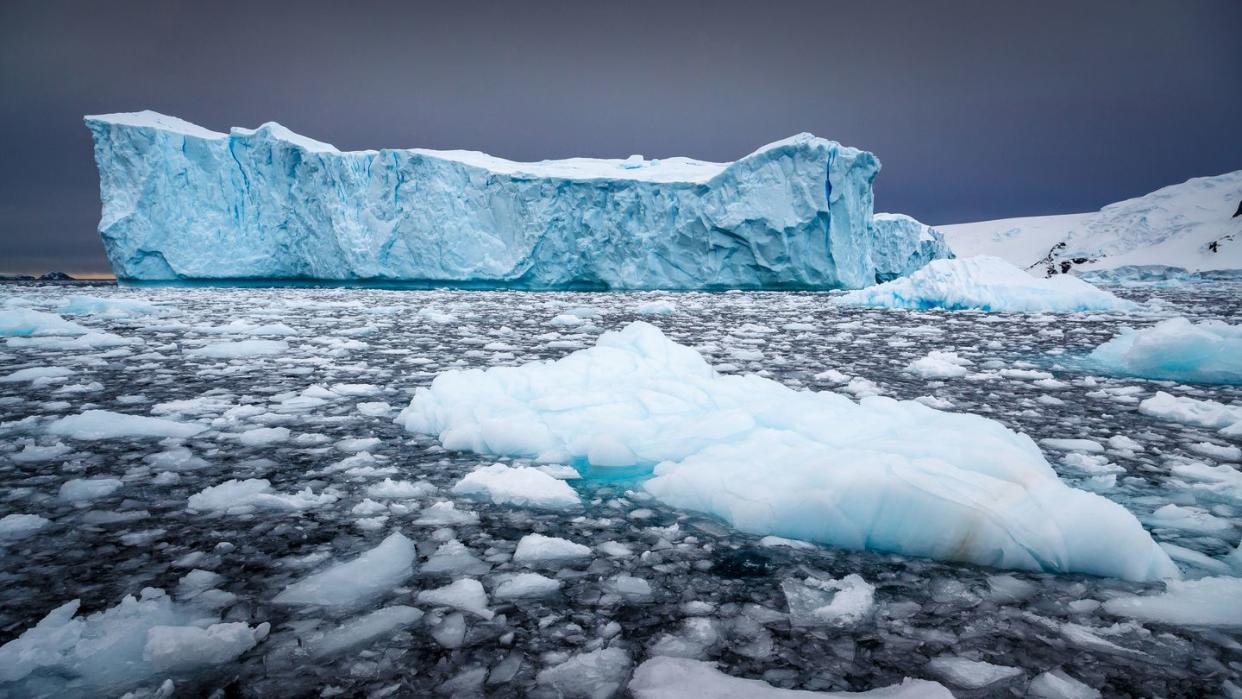After Being Stuck for 40 Years, This Rhode Island-Sized Iceberg Is Ready to Wreak Havoc

"Hearst Magazines and Yahoo may earn commission or revenue on some items through these links."
Stuck for nearly 40 years near Antarctica, the world’s largest iceberg has dislodged from the Weddell Sea and is now floating around.
The iceberg is likely headed toward “iceberg alley” in the South Atlantic.
About the size of the state of Rhode Island, the iceberg’s movements are being closely watched.
Even “iceberg alley”—the region of ocean in which the Titanic experienced its infamous collision over 100 years ago—has never seen something so enormous as this. The newly on-the-move A23a iceberg, the world’s largest iceberg, is now freely floating north of Antarctica.
The A23a iceberg is about the size of the state of Rhode Island at 1,500 square miles. It's currently under close watch, as it could soon hit the Antarctic Circumpolar Current, sending the berg into “iceberg alley” in the Southern Ocean. But it could end up quite a few different places.
“An iceberg of this scale has the potential to survive for quite a long time in the Southern Ocean, even though it’s much warmer, and it could make its way farther north up toward South Africa where it can disrupt shipping,” Oliver Marsh, British Antarctic Survey glaciologist, told Reuters.
Iceberg A23a dropped off West Antarctica’s Filchner-Ronne Ice Shelf in 1986, but the 1,300-foot-thick slab subsequently wedged itself into place in the nearby Weddell Sea. There, it has sat unmoving for nearly four decades. Now, after finally being on the move for over a year, the iceberg has started floating more rapidly. It has already made its way beyond the northern tip of the Antarctic Peninsula.
Andrew Fleming, a remote sensing expert form the British Antarctic Survey, told the BBC that A23a must have decreased in size just enough to lose its grip and start moving. “The consensus is the time had just come,” he said.
“Over time it’s probably just thinned slightly and got that little bit of extra buoyancy that’s allowed it to lift off the ocean floor and et pushed by ocean currents,” Marsh said.
Now that A23a is picking up speed, the iceberg has a range of potential eventual fates, including heading toward South African shipping channels. If it instead runs toward the island of South Georgia, it could ground on the shallow continental shelf, or worse: collide with the island (known to host seals, penguins, and seabirds). More likely, however, it will remain near Antarctica.
It’s also possible that none of this could happen, and A23a could simply start splintering during its journey and eventually pose no threat to wildlife or shipping. With the world’s largest iceberg no longer jammed onto the ocean floor, its potential impact has the scientific community watching and waiting.
You Might Also Like

